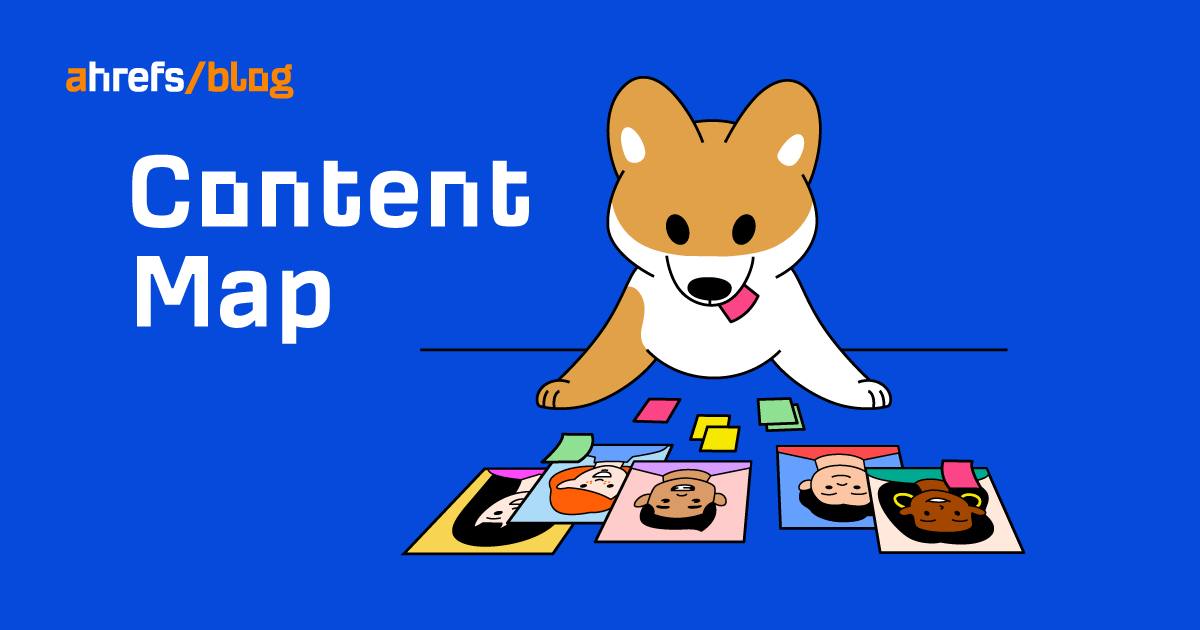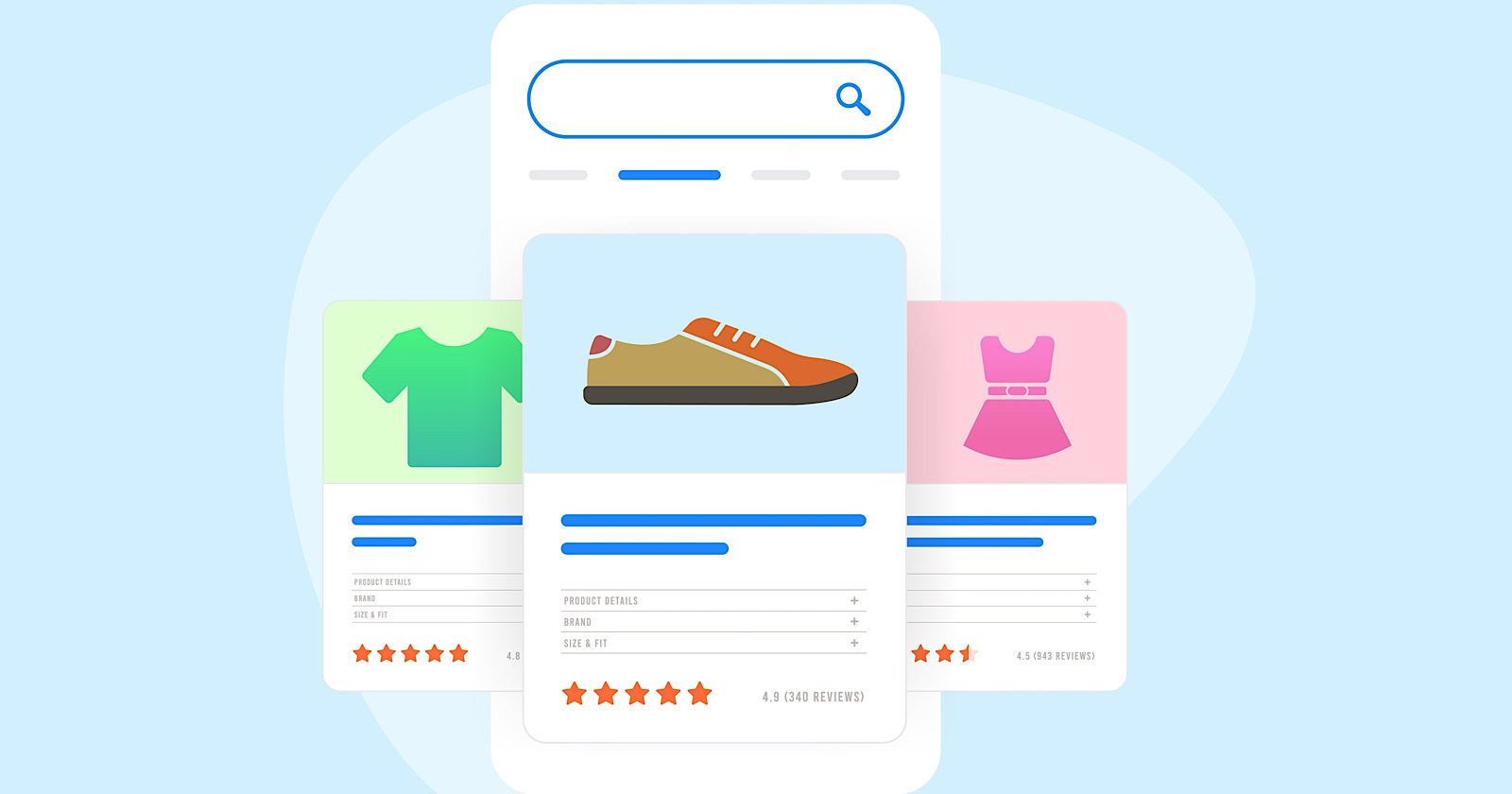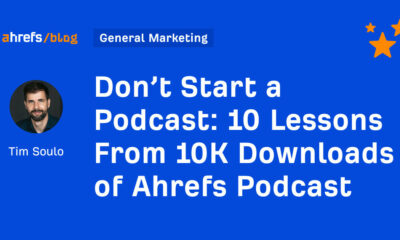SEO
Traditional Way & Ahrefs’ Way

Content maps help make sure your content serves a strategic role in nurturing your audience. It’s one of the best ways to keep your content aligned with your business goals.
I’ll cover two ways of creating content maps. The traditional way and the Ahrefs way. Both are tried and tested methods, but we like ours better—and I’ll explain why. Read on to learn both methods and choose the one that better suits your needs. We’ll talk about the following:
A content map is a document that lists stages of the buyer’s journey for every buyer persona and maps them with relevant content.

Example content map (from our content template). Different pieces of content have been assigned to various buyer’s journey stages for a particular buyer persona. Feel free to take a closer look at this inside our content map template.
The main reason for creating a content map is to make sure your brand’s content is accompanying each buyer persona throughout all stages of the marketing funnel—from attracting visitors to converting them and keeping them on board.
Here’s an additional reason. A sort of byproduct of creating a content map is getting an overview of your content inventory. This can help you spot gaps and find repurposing opportunities.
Follow these three steps to create your content map and fill any gaps with new content ideas.
1. Create buyer personas
A buyer persona is a semi-fictional person who represents the common characteristics of your customers (an archetype). Here’s an example buyer persona for our product:

A buyer persona helps you visualize your customers’ buying journey, internalize who they are, and empathize with their challenges and goals.
Depending on your resources, there are two ways you can identify your customers to create a buyer persona:
- The scientific way – Talk to potential customers. This can be your leads, social media followers, or simply people you know who may be interested in your product. You may also consider using services like SurveyMonkey, UserTesting, or Remesh to reach these people.
- The educated-guess way – If for some reason you can’t talk to real people at this stage, you need to get creative. Use your competitors’ data or the industry data and “enrich” it with other sources. You may find that, for example, organic search is the #1 spending priority, according to a CMO survey.
To make your content mapping effective, you need to create a buyer persona for each type of customer. The more granular your typology is, the more customized your content. On the other hand, it will take you more time and resources to address all the personas’ goals and challenges compared to more generalized content.
Too many personas? Consider creating categories that connect personas with similar traits, e.g., business owners, in-house teams, freelancers, etc.
2. Use our template to map existing content for each persona
To make content mapping easier, I’ve prepared a simple template. (Click here to make your own editable copy in Google Sheets.)
All you need to do here is to fill in your existing content under the corresponding stage of the buyer’s journey (you can find some examples in the template). If you don’t have any content to map yet or want to start over, no worries—I’ll share some ideas to solve these issues in the next section.
As for the stages of the buyer’s journey, there are many different typologies out there. I’ve used the one from our guide to creating a winning content strategy. It may be slightly different than what you’re used to, so feel free to modify it accordingly.
If this stuff is totally new to you, don’t bother customizing those stages for now. The general idea is to create content that attracts visitors and gradually turns them into happy customers who are willing to come back to you. So here are short descriptions of the stages used in the template:
- Increase brand awareness – At this stage, the prospect is just becoming aware of their problem. They don’t know the solution yet and may not know your brand. This type of content doesn’t necessarily need to feature your product, as you’re basically trying to introduce your brand to potential customers.
- Create interest and desire – You can do so by teaching potential customers more about their problems and how your product or service can solve them.
- Nurture interest and entice the purchase – You can further educate potential customers about your product or service and why it’s the best solution for them.
- Retain customers and build brand loyalty – To do this, educate customers on how to get the most out of your product or service and clearly demonstrate its value. Additionally, in this stage, you can tackle topics that you know your customers care for but do not necessarily give you the opportunity to feature your product/service in any practical way.
As you write down your content pieces, you can come across some dilemmas.
- The content fits multiple stages – You still have to choose one. Choose the one with the most dominant use case.
- The content doesn’t fit anywhere – See if that piece of content can be updated so that you can classify it easier without losing its current value. Another scenario is that my template is too simplistic. If so, you may need to add the buyer’s journey stages.
3. Fill in any gaps in the buyer’s journey
Chances are that while making your content map, you will find gaps in your buyer’s journey: places where there is no content or not enough content to serve a given journey stage. In that case, there are basically four methods for filling those gaps with relevant content ideas.
Do keyword research
Keyword research is the process of understanding the language your target customers use when searching for your products, services, and content. It then involves analyzing, comparing, and prioritizing the best keyword opportunities for your website.
For example, we can assume that our persona, Anna Agency, needs to figure out SEO tactics for clients from different industries. Keyword research will help us discover those industries, see search demand for related topics, and quickly gauge potential traffic.
To do this, we just need a seed keyword (e.g., “seo”) to view related topics and then we can fine-tune the search using various filters.
In the example below, I’m using the “for” modifier word. I’m also including queries that have more than 200 monthly searches and excluding words that are irrelevant—all in Ahrefs’ Keywords Explorer.

We can further narrow down that list by using other filters. For example, we can filter by Keyword Difficulty (KD) to see keywords that we can potentially rank for with less effort. Or we can use the Traffic Potential (TP) filter to hide keywords with low traffic.

Then, we can generate even more keyword ideas by using other modifier keywords that signal educational intent. Here are some of these words: how, guide, resource, ideas, tips, etc.

Last but not least, Ahrefs has a separate report for all of the questions related to a given topic that people type in Google, and it’s just one click away from the report we’ve been using so far.

Analyze competitors
One way to draw inspiration from your competitors is to manually check their websites for topic ideas. That’s a lot of man-hours.
Here’s how you can streamline this process with Ahrefs.
First of all, start by listing your competitors and doing basic market research. You can always double-check your competitor list by plugging your URL in Ahrefs’ Site Explorer and going to the Competing Domains report.

Now you can take the list of competitors to the Content Gap report to reveal the keywords that your competitors rank for but you don’t. These will be your new content opportunities. You can then filter that list to make it more manageable.

In the Content Gap report, you can filter out branded keywords for more clarity.
Additionally, you can easily discover your competitors’ best content. There are a few ways to do that, depending on your marketing objectives.
If you want to create content that is designed to rank on search engines and bring you organic traffic, try the Top pages report.

This report not only shows you the content and its traffic but also changes in traffic over time. This allows you to spot declining and trending topics.
But if it’s links that you’re after, you can use the Best by links or Best by links’ growth reports.

Finally, if you need social shares the most, go to our Top Content report to uncover content where your competitors got the most Twitter and Pinterest shares.
This report can also be used as a proxy for understanding what types of content resonate with your competitors’ target audiences because it also shows how many websites linked to that content and which parts were the most valuable (by viewing the anchors they linked with).

Apart from social media stats, this report offers insights into the reason why people linked to the content. You can click the “Details” button to uncover link anchors.
Study your niche
Another way of discovering relevant topics to enrich your content map is paying attention to what other people say in places where your industry and/or your target audience hangs out; for example, groups on social media, magazines, personal blogs, and communities.
A lot of the time, you will find information that overlaps with keyword research. But other times, you will come across hidden gems, such as:
- The next big thing people are talking about but no one has written a comprehensive guide for.
- Topics underserved by your competitors.
- Things your target audience wants to learn more about (and how they want to learn about said things).
- What language your target audience uses to express their goals and challenges.
For example, one of our best-performing articles, “How to Submit Your Website to Google,” was inspired by a printed magazine titled “How to set up an online business” that was found in an airport bookstore.

If you think that’s too much manual work, you can try an audience research tool like SparkToro. Just plug in topics your target audience frequently talks about to discover related topics and hashtags (among many other things).

On top of topic ideas, SparkToro can also help you with identifying their demographics and discovering what media your target audience consumes.
Survey your audience
Try the obvious—just ask your audience what type of content will make their life easier.
If you already have some blog/newsletter subscribers on board, this step is as easy as preparing a questionnaire and sending it. Alternatively, you can display a short questionnaire on your site.
But if you’re just starting out, you can use an agile market research software like SurveyMonkey to get your questionnaire in front of the right eyes.
Here are a few questions you can ask:
- What would you like to learn about on this blog?
- What’s the biggest priority in your job?
- In the last months, what was your biggest challenge?
- Do you plan on buying our product in the near future?
- How did you discover our blog?
- What’s your favorite source of information about ___?
And that’s about it when it comes to the “traditional” approach to content mapping. Here’s what we, at Ahrefs, do differently and why we do it that way.
The traditional way of content mapping matches content to a single stage of the funnel. But that one-to-one match isn’t always the case. So we use a different approach that helps us create product-led content that brings over 273K visits from search to our blog every month.

A little bit of theory
The thing is that a single article can serve various purposes. It can attract a potential customer and help to retain an existing customer.

Moreover, in some cases, a single article can take the user down the entire funnel—from learning about a solution to purchasing the solution.
Let’s take our guide on how to rank higher on Google as an example. In six easy steps, it explains how to improve rankings of underperforming keywords and get more traffic as a result.
So let’s say someone Googles “how to rank higher on google.” That person is pretty much right at the top of the funnel because they’re aware of their problem but don’t know the solution yet. They may not have heard of Ahrefs and may have zero knowledge of SEO.
Being at the first stage of the funnel, they come across our guide. As the guide walks them through the process, it may also walk them through the entire funnel. They learn the solution (SEO) and learn that they need a tool like Ahrefs to implement the solution.
Besides, ask yourself this: Can you remember the last time branded content made you buy something? Was it one or more content pieces? Was your “buyer journey” linear or more complex? You may find that the map is not the territory.
The “business potential” framework
Because it seems that the models of the buyer’s journey aren’t always useful, we map content based on a scale of how crucial our product is in solving a given problem.

Let’s look at the business potential (BP) scale in detail and see some examples for each of the scores. If you want to dive deeper into this framework, you can skim through the articles below to see how our product is featured (or why it can’t be featured).
So if you want to create a content map with the use of our framework, it’s a really simple one—just the topic and its BP score.
Additionally, you can complement that with some SEO metrics (like traffic potential) if search engines are an essential marketing channel to you. So it can look something like this:
| Topic | Business potential | Organic traffic potential |
|---|---|---|
| 13 Best Marketing Blogs to Follow (For Marketers of All Levels) | 0 | 300 |
| Marketing Objectives: How to Set Them Right (With Examples) | 1 | 1200 |
| ‘Not Provided’ in Google Analytics: How to Reclaim Your Keyword Data | 2 | 800 |
| What Is SEO Content? How to Write Content That Ranks | 3 | 900 |
That said, there are still some similarities between our model and the traditional model. For example, we also use buyer personas. We don’t use them to “customize” every topic, though. We use them to understand who we are talking to so we can align the style and depth of the content.
For example, we’re trying to avoid marketing jargon, as we’re not targeting our content to marketing academics but rather marketing practitioners who are not always experts in this field.
You will find these tools helpful in creating and populating your content map:
- Ahrefs – SEO tools like ours are indispensable if you want to learn what people look for online, how often, and what words they use in their searches.
- Google Sheets – This is for using our content mapping template.
- Diagramming tool – Some examples include Lucidchart or MindMeister, which are great for creating buyer’s journey diagrams/maps. This is an additional (and harder) step you can take in content mapping. Do this if you want to better understand and/or visualize the buyer’s journey in your particular case.
- Survey tool – Tools such as Google Forms, SurveyMonkey, or Survicate can be used for getting feedback about your content.
- Audience research tool – Try SparkToro or Brandwatch for finding the topics that make your audience tick.
Final thoughts
Let’s complete this guide by discussing some advantages and disadvantages of these two content mapping methods:
| Traditional content mapping | Ahrefs’ content mapping | ||
|---|---|---|---|
| Pros | Cons | Pros | Cons |
| Customizes content for specific personas | Too “square” buckets | Easy to implement | Can lead to missed opportunities where product-led content can’t be applied |
| Easier to spot gaps in the buyer’s journey | Can become too complicated (too time consuming) | Enhances product marketing | Frequent product placement can lead to readers’ fatigue in owned marketing channels |
| Can be used for all content formats and channels | Uses a simplified model of user behavior | Best for blogging, video blogging and, generally, longer content formats |
So can we take the best of both worlds and create a hybrid? I think so. One way is to insert the business score into the stages of the buyer’s journey.
For example, you can require a score of 2 or 3 for content designed to entice people to make a purchase. Topics with scores 0 and 1 are OK as long as they are either in the interest, desire, or retain stages.
Whether that hybrid model works well enough is a conclusion I’ll leave you to make.
What’s next after mapping content? Try our resources on content marketing to learn things like content strategy, content creation, promotion, and repurposing.
Got questions or comments? Ping me on Twitter.
SEO
Google Cautions On Blocking GoogleOther Bot

Google’s Gary Illyes answered a question about the non-search features that the GoogleOther crawler supports, then added a caution about the consequences of blocking GoogleOther.
What Is GoogleOther?
GoogleOther is a generic crawler created by Google for the various purposes that fall outside of those of bots that specialize for Search, Ads, Video, Images, News, Desktop and Mobile. It can be used by internal teams at Google for research and development in relation to various products.
The official description of GoogleOther is:
“GoogleOther is the generic crawler that may be used by various product teams for fetching publicly accessible content from sites. For example, it may be used for one-off crawls for internal research and development.”
Something that may be surprising is that there are actually three kinds of GoogleOther crawlers.
Three Kinds Of GoogleOther Crawlers
- GoogleOther
Generic crawler for public URLs - GoogleOther-Image
Optimized to crawl public image URLs - GoogleOther-Video
Optimized to crawl public video URLs
All three GoogleOther crawlers can be used for research and development purposes. That’s just one purpose that Google publicly acknowledges that all three versions of GoogleOther could be used for.
What Non-Search Features Does GoogleOther Support?
Google doesn’t say what specific non-search features GoogleOther supports, probably because it doesn’t really “support” a specific feature. It exists for research and development crawling which could be in support of a new product or an improvement in a current product, it’s a highly open and generic purpose.
This is the question asked that Gary narrated:
“What non-search features does GoogleOther crawling support?”
Gary Illyes answered:
“This is a very topical question, and I think it is a very good question. Besides what’s in the public I don’t have more to share.
GoogleOther is the generic crawler that may be used by various product teams for fetching publicly accessible content from sites. For example, it may be used for one-off crawls for internal research and development.
Historically Googlebot was used for this, but that kind of makes things murky and less transparent, so we launched GoogleOther so you have better controls over what your site is crawled for.
That said GoogleOther is not tied to a single product, so opting out of GoogleOther crawling might affect a wide range of things across the Google universe; alas, not Search, search is only Googlebot.”
It Might Affect A Wide Range Of Things
Gary is clear that blocking GoogleOther wouldn’t have an affect on Google Search because Googlebot is the crawler used for indexing content. So if blocking any of the three versions of GoogleOther is something a site owner wants to do, then it should be okay to do that without a negative effect on search rankings.
But Gary also cautioned about the outcome that blocking GoogleOther, saying that it would have an effect on other products and services across Google. He didn’t state which other products it could affect nor did he elaborate on the pros or cons of blocking GoogleOther.
Pros And Cons Of Blocking GoogleOther
Whether or not to block GoogleOther doesn’t necessarily have a straightforward answer. There are several considerations to whether doing that makes sense.
Pros
Inclusion in research for a future Google product that’s related to search (maps, shopping, images, a new feature in search) could be useful. It might be helpful to have a site included in that kind of research because it might be used for testing something good for a site and be one of the few sites chosen to test a feature that could increase earnings for a site.
Another consideration is that blocking GoogleOther to save on server resources is not necessarily a valid reason because GoogleOther doesn’t seem to crawl so often that it makes a noticeable impact.
If blocking Google from using site content for AI is a concern then blocking GoogleOther will have no impact on that at all. GoogleOther has nothing to do with crawling for Google Gemini apps or Vertex AI, including any future products that will be used for training associated language models. The bot for that specific use case is Google-Extended.
Cons
On the other hand it might not be helpful to allow GoogleOther if it’s being used to test something related to fighting spam and there’s something the site has to hide.
It’s possible that a site owner might not want to participate if GoogleOther comes crawling for market research or for training machine learning models (for internal purposes) that are unrelated to public-facing products like Gemini and Vertex.
Allowing GoogleOther to crawl a site for unknown purposes is like giving Google a blank check to use your site data in any way they see fit outside of training public-facing LLMs or purposes related to named bots like GoogleBot.
Takeaway
Should you block GoogleOther? It’s a coin toss. There are possible potential benefits but in general there isn’t enough information to make an informed decision.
Listen to the Google SEO Office Hours podcast at the 1:30 minute mark:
Featured Image by Shutterstock/Cast Of Thousands
SEO
AI Search Boosts User Satisfaction

A new study finds that despite concerns about AI in online services, users are more satisfied with search engines and social media platforms than before.
The American Customer Satisfaction Index (ACSI) conducted its annual survey of search and social media users, finding that satisfaction has either held steady or improved.
This comes at a time when major tech companies are heavily investing in AI to enhance their services.
Search Engine Satisfaction Holds Strong
Google, Bing, and other search engines have rapidly integrated AI features into their platforms over the past year. While critics have raised concerns about potential negative impacts, the ACSI study suggests users are responding positively.
Google maintains its position as the most satisfying search engine with an ACSI score of 81, up 1% from last year. Users particularly appreciate its AI-powered features.
Interestingly, Bing and Yahoo! have seen notable improvements in user satisfaction, notching 3% gains to reach scores of 77 and 76, respectively. These are their highest ACSI scores in over a decade, likely due to their AI enhancements launched in 2023.
The study hints at the potential of new AI-enabled search functionality to drive further improvements in the customer experience. Bing has seen its market share improve by small but notable margins, rising from 6.35% in the first quarter of 2023 to 7.87% in Q1 2024.
Customer Experience Improvements
The ACSI study shows improvements across nearly all benchmarks of the customer experience for search engines. Notable areas of improvement include:
- Ease of navigation
- Ease of using the site on different devices
- Loading speed performance and reliability
- Variety of services and information
- Freshness of content
These improvements suggest that AI enhancements positively impact various aspects of the search experience.
Social Media Sees Modest Gains
For the third year in a row, user satisfaction with social media platforms is on the rise, increasing 1% to an ACSI score of 74.
TikTok has emerged as the new industry leader among major sites, edging past YouTube with a score of 78. This underscores the platform’s effective use of AI-driven content recommendations.
Meta’s Facebook and Instagram have also seen significant improvements in user satisfaction, showing 3-point gains. While Facebook remains near the bottom of the industry at 69, Instagram’s score of 76 puts it within striking distance of the leaders.
Challenges Remain
Despite improvements, the study highlights ongoing privacy and advertising challenges for search engines and social media platforms. Privacy ratings for search engines remain relatively low but steady at 79, while social media platforms score even lower at 73.
Advertising experiences emerge as a key differentiator between higher- and lower-satisfaction brands, particularly in social media. New ACSI benchmarks reveal user concerns about advertising content’s trustworthiness and personal relevance.
Why This Matters For SEO Professionals
This study provides an independent perspective on how users are responding to the AI push in online services. For SEO professionals, these findings suggest that:
- AI-enhanced search features resonate with users, potentially changing search behavior and expectations.
- The improving satisfaction with alternative search engines like Bing may lead to a more diverse search landscape.
- The continued importance of factors like content freshness and site performance in user satisfaction aligns with long-standing SEO best practices.
As AI becomes more integrated into our online experiences, SEO strategies may need to adapt to changing user preferences.
Featured Image: kate3155/Shutterstock
SEO
Google To Upgrade All Retailers To New Merchant Center By September

Google has announced plans to transition all retailers to its updated Merchant Center platform by September.
This move will affect e-commerce businesses globally and comes ahead of the holiday shopping season.
The Merchant Center is a tool for online retailers to manage how their products appear across Google’s shopping services.
Key Changes & Features
The new Merchant Center includes several significant updates.
Product Studio
An AI-powered tool for content creation. Google reports that 80% of current users view it as improving efficiency.
This feature allows retailers to generate tailored product assets, animate still images, and modify existing product images to match brand aesthetics.
It also simplifies tasks like background removal and image resolution enhancement.
Centralized Analytics
A new tab consolidating various business insights, including pricing data and competitive analysis tools.
Retailers can access pricing recommendations, competitive visibility reports, and retail-specific search trends, enabling them to make data-driven decisions and capitalize on popular product categories.
Redesigned Navigation
Google claims the new interface is more intuitive and cites increased setup success rates for new merchants.
The platform now offers simplified website verification processes and can pre-populate product information during setup.
Initial User Response
According to Google, early adopters have shown increased engagement with the platform.
The company reports a 25% increase in omnichannel merchants adding product offers in the new system. However, these figures have yet to be independently verified.
Jeff Harrell, Google’s Senior Director of Merchant Shopping, states in an announcement:
“We’ve seen a significant increase in retention and engagement among existing online merchants who have moved to the new Merchant Center.”
Potential Challenges and Support
While Google emphasizes the upgrade’s benefits, some retailers, particularly those comfortable with the current version, may face challenges adapting to the new system.
The upgrade’s mandatory nature could raise concerns among users who prefer the existing interface or have integrated workflows based on the current system.
To address these concerns, Google has stated that it will provide resources and support to help with the transition. This includes tutorial videos, detailed documentation, and access to customer support teams for troubleshooting.
Industry Context
This update comes as e-commerce platforms evolve, with major players like Amazon and Shopify enhancing their seller tools. Google’s move is part of broader efforts to maintain competitiveness in the e-commerce services sector.
The upgrade could impact consumers by improving product listings and providing more accurate information across Google’s shopping services.
For the e-commerce industry as a whole, it signals a continued push towards AI-driven tools and data-centric decision-making.
Transition Timeline
Google states that retailers will be automatically upgraded by September if they still need to transition.
The company advises users to familiarize themselves with the new features before the busy holiday shopping period.
Featured Image: BestForBest/Shutterstock
-

 SEARCHENGINES6 days ago
SEARCHENGINES6 days agoBillions Of Google goo.gl URLs To 404 In The Future
-
SEARCHENGINES5 days ago
Daily Search Forum Recap: July 22, 2024
-

 SEARCHENGINES7 days ago
SEARCHENGINES7 days agoGoogle Core Update Coming, Ranking Volatility, Bye Search Notes, AI Overviews, Ads & More
-

 SEO6 days ago
SEO6 days ago11 Copyscape Alternatives To Check Plagiarism
-

 SEO6 days ago
SEO6 days agoGoogle Warns Of Last Chance To Export Notes Search Data
-
SEARCHENGINES4 days ago
Daily Search Forum Recap: July 23, 2024
-

 AFFILIATE MARKETING6 days ago
AFFILIATE MARKETING6 days agoThe Top 5 AI Tools That Can Revolutionize Your Workflow and Boost Productivity
-

 SEO4 days ago
SEO4 days agoSystem Builders – How AI Changes The Work Of SEO
















You must be logged in to post a comment Login